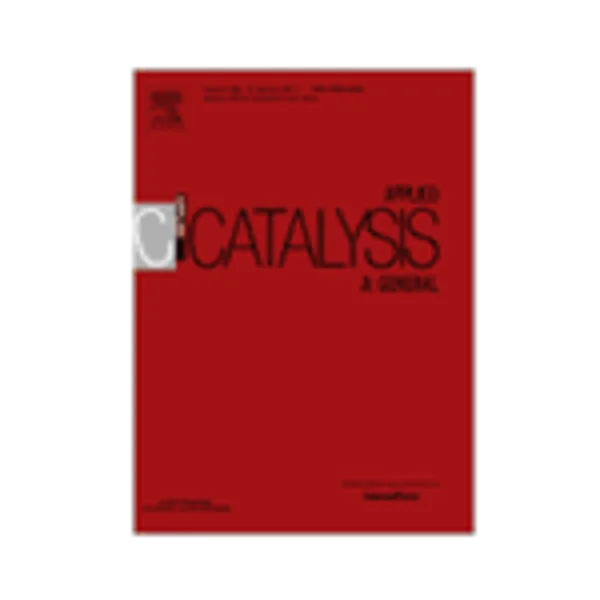-
washcoated pd/al2o3 monoliths for the liquid phase hydrodechlorination of dioxins
جزئیات بیشتر مقاله- تاریخ ارائه: 1392/07/24
- تاریخ انتشار در تی پی بین: 1392/07/24
- تعداد بازدید: 1067
- تعداد پرسش و پاسخ ها: 0
- شماره تماس دبیرخانه رویداد: -
the catalytic activity and durability of 2 wt.% pd/al2o3 in powder and washcoated on cordierite monoliths were examined for the liquid phase hydrodechlorination (lphdc) of polychlorinated dibenzo-p-dioxins/polychlorinated dibenzofurans (pcdd/fs), also known as dioxins. naoh was employed as a neutralizing agent, and 2-propanol was used as a hydrogen donor and a solvent. fresh and spent powder and monolith samples were characterized by elemental analysis, surface area, hydrogen chemisorption, scanning electron microscopy/energy dispersive x-ray spectroscopy (sem/edx), and transmission electron microscopy/energy dispersive x-ray spectroscopy (tem/edx). three reactor configurations were compared including the slurry and monolith batch reactors as well as the bubble loop column resulting in 100, 70, and 72% sample toxicity reduction, respectively, after 5 h of reaction. however, the slurry and monolith batch reactors lead to catalyst sample loss via a filtration process (slurry) and washcoat erosion (monolith batch), as well as rapid deactivation of the powder catalyst samples. the monolith employed in the bubble loop column remained stable and active after four reaction runs. three preemptive regeneration methods were evaluated on spent monolith catalyst including 2-propanol washing, oxidation/reduction, and reduction. all three procedures reactivated the spent catalyst samples, but the combustion methods proved to be more efficient at eliminating the more stable poisons.
مقالات جدیدترین رویدادها
-
استفاده از تحلیل اهمیت-عملکرد در ارائه الگوی مدیریت خلاقیت سازمانی و ارائه راهکار جهت بهبود
-
بررسی تاثیر ارزش وجوه نقد مازاد بر ساختار سرمایه شرکت های پذیرفته شده در بورس اوراق بهادار تهران
-
بررسی تأثیر سطح افشای ریسک بر قرارداد بدهی شرکت های پذیرفته شده در بورس اوراق بهادار تهران
-
بررسی تأثیر رتبه بندی اعتباری مبتنی بر مدل امتیاز بازار نوظهور بر نقد شوندگی سهام با تأکید بر خصوصی سازی شرکت ها
-
تأثیر آمیخته بازاریابی پوشاک ایرانی بر تصویر ذهنی مشتری پوشاک ایرانی (هاکوپیان)
-
رابطه بین محیط کار اخلاقی، تعهد کارمندان و عملکرد خدمت رسانی فعالانه به مشتری و با اثر نقش میانجی سیاست سازمانی و نقش آن در اقتصاد مقاومتی
-
بررسی رابطه مشارکت کارکنان و تعهد سازمانی آنان در نهادهای دولتی
-
بررسی اثر انتقال متقابل تمرینات یک طرفه عضله چهار سر ران به اندام مقابل
-
e-unification with constants vs. general e-unification
-
design of tall bridge piers by ant colony optimization
مقالات جدیدترین ژورنال ها
-
مدیریت و بررسی افسردگی دانش آموزان دختر مقطع متوسطه دوم در دروان کرونا در شهرستان دزفول
-
مدیریت و بررسی خرد سیاسی در اندیشه ی فردوسی در ادب ایران
-
واکاوی و مدیریت توصیفی قلمدان(جاکلیدی)ضریح در موزه آستان قدس رضوی
-
بررسی تاثیر خلاقیت، دانش و انگیزه کارکنان بر پیشنهادات نوآورانه کارکنان ( مورد مطالعه: هتل های 3 و 4 ستاره استان کرمان)
-
بررسی تاثیر کیفیت سیستم های اطلاعاتی بر تصمیم گیری موفق در شرکتهای تولیدی استان اصفهان (مورد مطالعه: مدیران شرکتهای تولیدی استان اصفهان)
-
بررسی سازوکار شناسایی اطفال و نوجوانان در معرض خطر و بزه دیده در پرتو قانون حمایت از اطفال و نوجوانان مصوب 1399
-
بررسی رابطه بین وجه نقد و سود تعهدی با بازده سهام در بورس اوراق بهادار تهران
-
پیش بینی روابط زناشویی زنان شاغل براساس متغیرهای سلامت معنوی و نگرش به ارتباط قبل از ازدواج
-
روش شناسی فرآیند تصمیم گیری با رویکرد زیست شناسی مبتنی بر اعصاب
-
a review of the applications of bioproteins in the preparation of biodegradable films and polymers




سوال خود را در مورد این مقاله مطرح نمایید :